Macy's Thanksgiving Day Parade 2016
Tomorrow, the 90th annual Macy’s Thanksgiving Day Parade will make its way to Manhattan, with thousands of anxious visitors flocking to watch the festive procession unfold. Being that this is the 90th anniversary, the parade will likely be even more magical than ever. Of course, this means a traffic nightmare for everyone else. But thankfully, the NYC Department of Transportation has released a list of street closures that will be in effect on Thanksgiving Day.
But it’s not just tomorrow you have to worry about: Thanks to the balloon inflation on Central Park West, some street closures will begin today, too. Per ABC7:
Traffic restrictions begin at 9:30 a.m. Wednesday. Between 81st Street and 77th Street from Central Park West to Columbus Avenue will be closed to vehicular traffic for the balloon inflation. The inflation can be viewed by pedestrians from 3 p.m. until 10 p.m. on 81st Street and 77th Street from Central Park West to Columbus Avenue. Pedestrians are advised to enter the viewing area from the West side of Columbus Avenue at 79th Street.
Closures beginning at 1 p.m.:
-West 79th Street between Columbus and Amsterdam Avenues
Closures beginning at 3 p.m.:
-West 76th Street between Columbus and Central Park West Avenues
-West 77th Street between Columbus and Amsterdam Avenues
-West 78th Street between Columbus and Amsterdam Avenues
-West 80th Street between Columbus and Amsterdam Avenues
-West 81st Street between Columbus and Amsterdam Avenues
-Central Park Transverse Road at Central Park West and West 81 St. (Both Directions)
And after 10 p.m., 81st Street and 77th Street from Central Park West to Columbus Avenue, along with Central Park West from 59th Street to 86th Street, will be closed completely.
Street Closures
Beginning at 9 a.m. to 12 p.m. on Thursday, November 24th, the following streets will be closed to vehicular traffic:
- 6th Avenue between 59th Street and 34th Street
- 7th Avenue between 33rd Street and 40th Street
- Columbus Avenue between 81st Street and 77th Street
- Central Park West between 86th Street and east side of Columbus Circle/59th Street
- 81st Street between Central Park West and Columbus Avenue
- 76th Street and 77th Street between Central Park West and Columbus Avenue
- 71st Street between Central Park West and Columbus Avenue
- 68th Street between Central Park West and Columbus Avenue
- 62nd Street between Central Park West and Columbus Avenue
- 59th Street between Columbus Circle and 6th Avenue
- Broadway between 59th Street and 58th Street
- 40th Street between 7th Avenue and 8th Avenue
- 36th Street to 39th Street between Broadway and 8th Avenue
- 35th Street between 6th Avenue and 8th Avenue
- 34th Street between 5th Avenue and 8th Avenue
- 33rd Street between 6th Avenue and 10th Avenue
Parade Route
The parade’s route will travel 2.5 miles, beginning at Central Park West and 77th Street and ending at Macy’s on 34th Street. Macy’s has also mapped out the route on the parade website:
- Central Park West between 81st Street and East Side of Columbus Circle/59th Street
- Broadway between 59th Street and 58th Street
- 59th Street between Columbus Circle and 6th Avenue
- 6th Avenue between 59th Street and 34th
432 West 52nd Street, Unit 4A
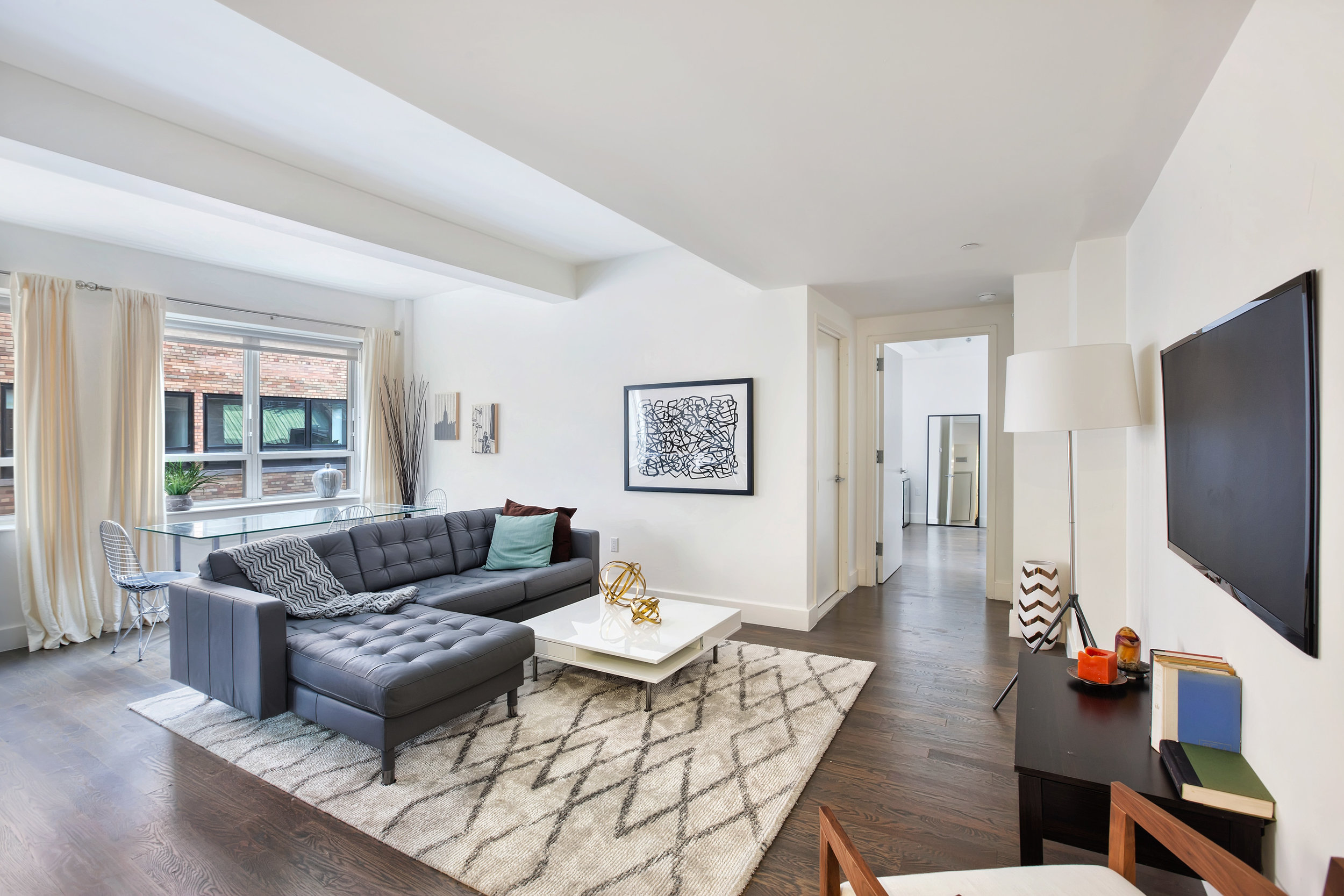
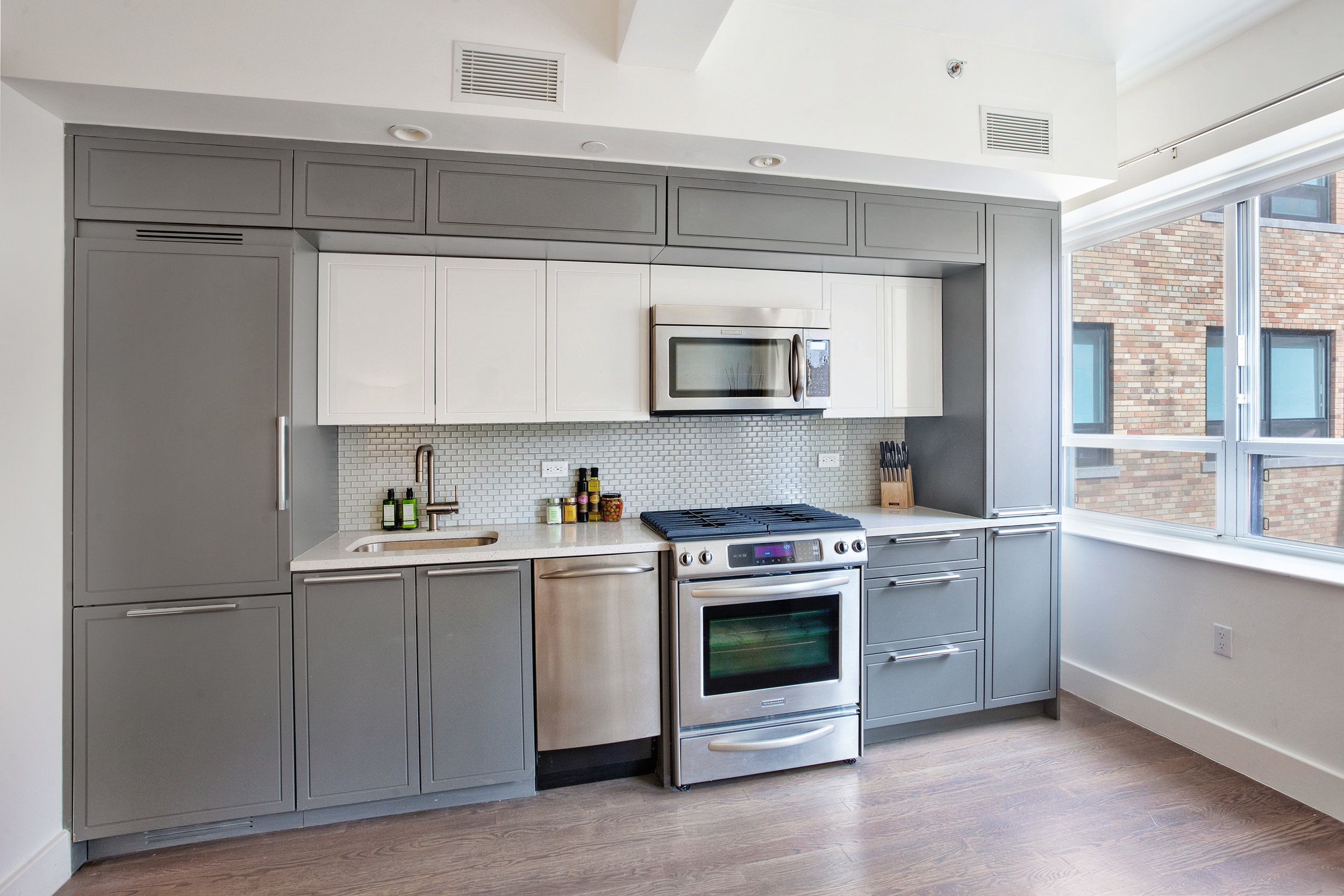

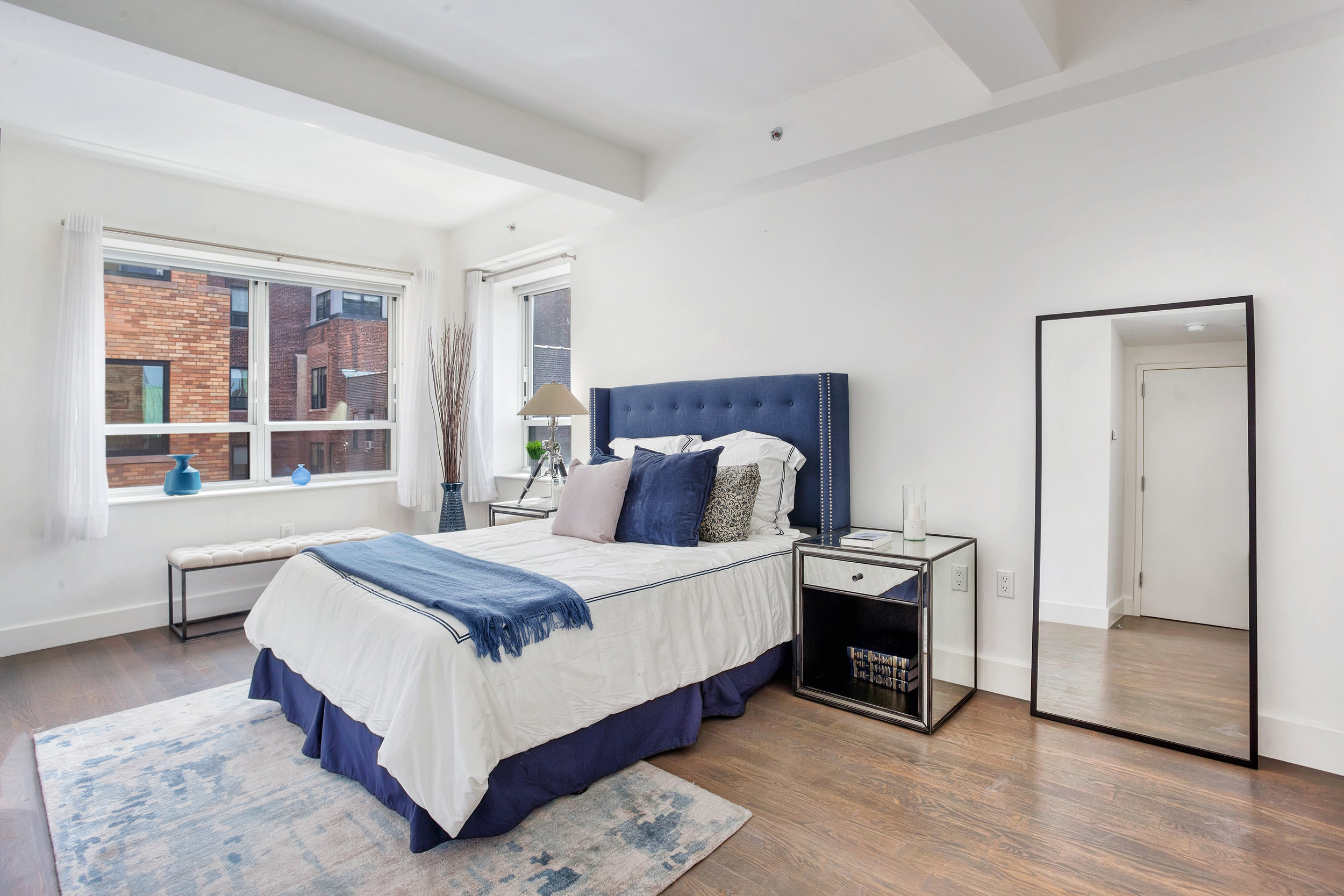
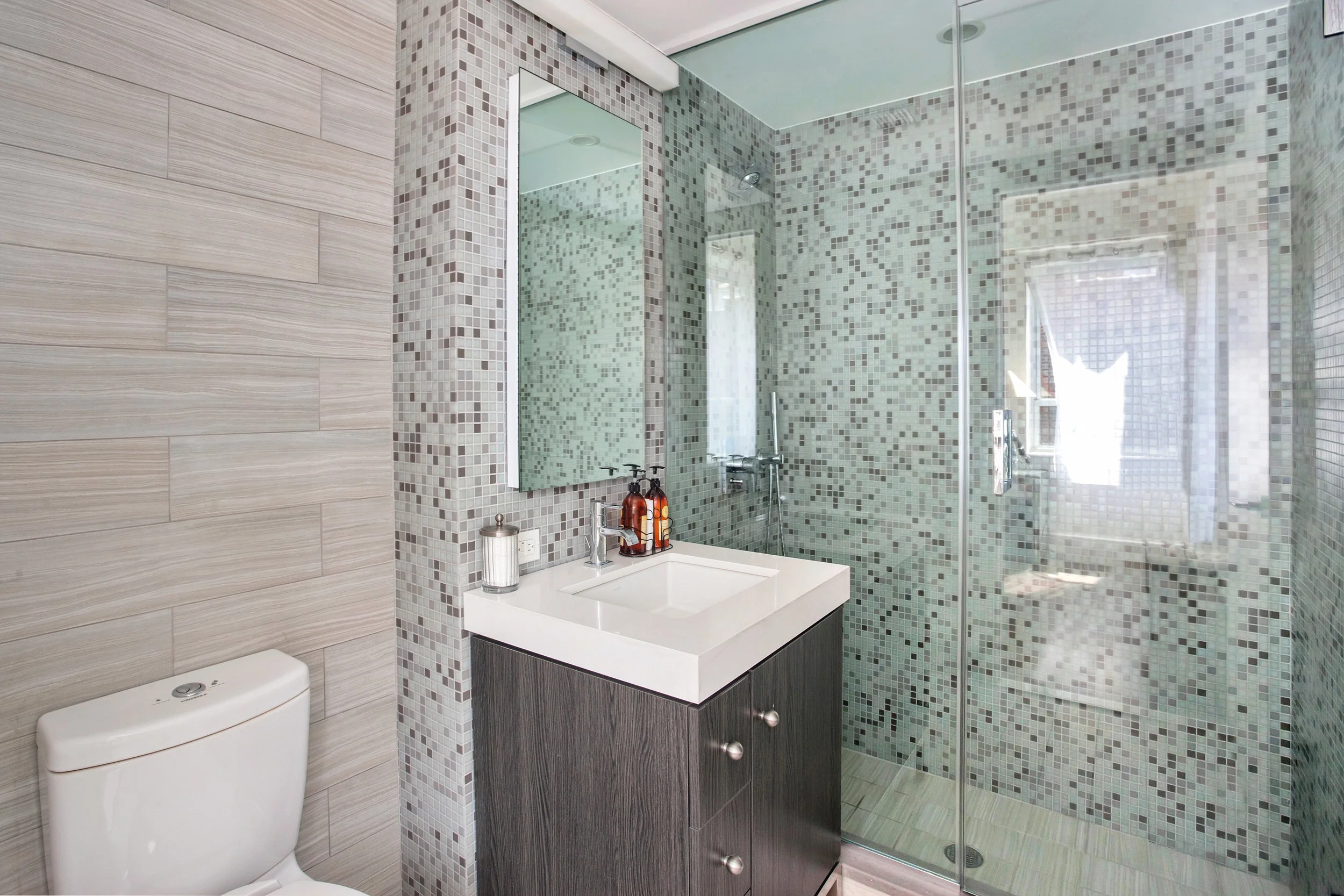
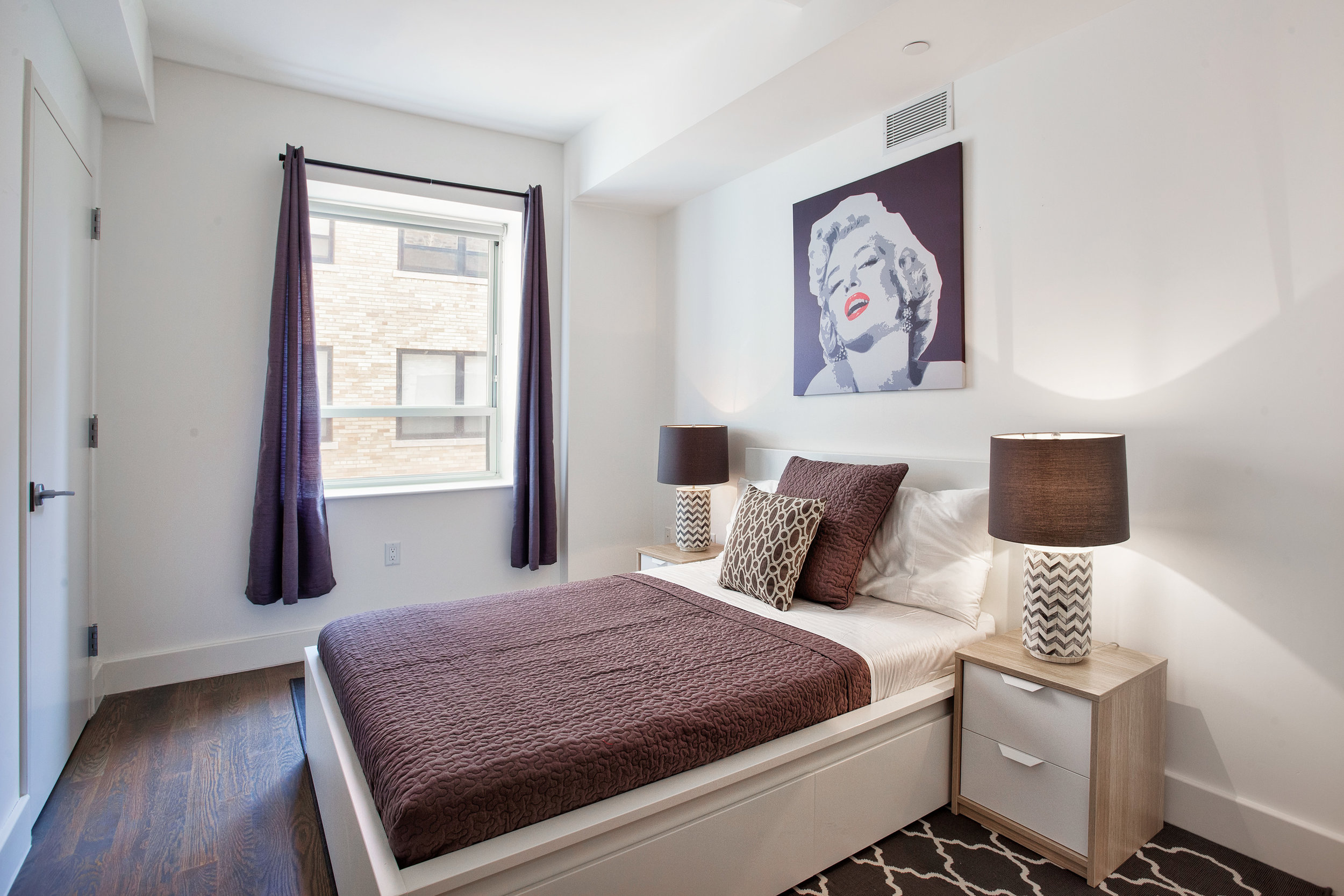
432 West 52nd Street, Unit 4A
HELL'S KITCHEN, MANHATTAN
2 Bed | 2 Bath
Offered At $1,495,000
Taxes: $1,654 / mo. | CC:$1,476 / mo. | New Development | Doorman | Roof Deck & Gym
- NO Transfer Tax
- NO Sponser Closing Fees
- Seller Will Pay 50% of Common Charges For Two Years
Stunning finishes await in this brand-new, two-bedroom home providing a rare opportunity to live in a spectacular new-construction building without paying the sponsors transfer taxes and closing cost fees!
This beautiful two bedroom corner unit features a light-filled master with en suite bathroom, as well as a spacious great room. The home is topped by 9-foot ceilings while white oak hardwood floors run underfoot. The great room provides ample space for living and dining areas while the nearby open kitchen is a model of efficient, attractive design with integrated refrigerator, stainless steel appliances, lacquer cabinets and sleek Caesarstone countertops.
The large windowed master is a serene space with a wall of closets, plus additional closets throughout the home ensure that storage is never an issue. The sleek bathrooms features custom vanity, frameless glass walk-in shower, gorgeous floor-to-ceiling tile and radiant heat flooring. Central climate control, energy-efficient windows and an in-unit washer-dryer provide the ultimate in comfort and convenience.
432 W 52 is a boutique condominium with extensive amenities including a 4,200-square-foot common landscaped roof deck, spacious residents' lounge, fully equipped fitness center and 24-hour doorman. Situated in Midtown within walking distance of Central Park, the Theater District, Columbus Circle and Times Square, the location is quite literally at the center of it all! Nearby access to the A/C/E, B/D, 1 and N/Q/R subway lines puts the rest of the city at your feet.
18 East 18th Street, 4th Floor






18 East 18th Street, 4th Floor
FLATIRON, MANHATTAN
2.5 Bed | 2.5 Bath | Almost 3,000 sqft
Offered At $3,000,000
Co-Op | MM: $3,808 / mo. | Full Floor Loft
Looking for the true Flatiron Loft apartment? Look no farther, this 4th floor loft is by no means a cookie cutter property.
Introducing an incredible turn of the century true Flatiron loft. Your keyed elevator will open directly to your open loft space. With almost 2800 SF of incredible loft space to configure anyway, the possibilities are endless. Currently configured as a one bedroom with an interior bedroom/home office and two and a half bathrooms. There is also a laundry room, huge storage closets, and new open chef's kitchen with large dining area, open living room with wet bar and home office alcove. Or create your own masterpiece; you and your architect can look at this huge property as a blank canvas with no restrictions in terms of use of space. One could truly envision the space as opened up with minimal walls or, if needed, conveniently have two, three or even four bedroom and bathrooms. The configurations and possibilities are endless.
Located in the true heart of the Flatiron District, 18 East 18th Street is surrounded by some of the oldest, newest and most beautiful buildings in the city. Located between two great parks; Madison Square Park and Union Square, your new home will be have the best options in the city for restaurants, grocery stores, transportation, nightlife, bar scene, yoga studio's, small boutiques, large stores and everything in between. However, you'll be transported back to your island oasis once the elevator door opens up to your incredible loft.
This Week’s 5 Most Expensive Listings
In the past seven days, 16 new listings priced at $10 million and above hit the market, according to StreetEasy. From that list, these are the crème de la crème, otherwise known as the five most expensive residential listings.
12 East 80th Street
Address 12 East 80th Street
Price $35,000,000
Type/Size Townhouse: seven bedrooms and nine-and-a-half bathrooms
This 10,000-square-foot home is just off Fifth Avenue, and just a stones-throw away from the Metropolitan Museum of Art. Built in 1886, it has four fireplaces, three laundry facilities, three terraces, a roof deck and what looks like a pretty impressive kids play room.
740 Park Avenue #6/7A
Address 740 Park Avenue #6/7A
Price $29,500,000
Type/Size Co-op: four bedrooms and six bathrooms
This spread is at 740 Park Avenue, Manhattan’s most prestigious co-op building. It comes with a marble gallery, a sweeping staircase, a “baronial” living room facing Park Avenue and a library. This isn’t the first time that the tony 12-room duplex – known as the Bouvier Apartment – has been up for grabs; it was originally listed for $44 million in 2014.
3 East 94th Street
Address 3 East 94th Street
Price $29,500,000
Type/Size Townhouse: six bedrooms and six-and-a-half bathrooms
This Upper East Side townhouse which was owned by the late president of American Express has a fully-equipped gym, a sauna, two master bedrooms, which each have their own master bathroom (in case you don’t want to share), a roof terrace with views of Central Park and a wine cellar that can hold 400 bottles. Plus it was designated a landmark in 1974.
941 Park Avenue #5/6C
Address 941 Park Avenue #5/6C
Price $20,000,000
Type/Size Co-op: seven bedrooms and seven-and-a-half bathrooms
This listing is the opportunity to combine two full-floor spreads. The resulting pad would be a 9,000-square-foot duplex with a formal dining room, library, media room, home office, den, play room, and two wood-burning fireplaces.
505 West 19th Street Penthouse-1
Address 505 West 19th Street Penthouse-1
Price $17,500,000
Type/Size Condo: four bedrooms and four-and-a-half bathrooms
Perched next to the High Line you’ll find this building, and its swanky penthouse. The full-floor unit has oversized windows, a chef’s kitchen, a cast iron soaking tub and multiple terraces.
424 West 49th Street, Unit 3A






424 West 49th Street, Unit 3A
WASHINGTON HEIGHTS, MANHATTAN
1 Bed | 1 Bath | 622sqft
Offered At $850,000
CC: $753 / mo. | Taxes: $348 / mo. | Condo
This spacious, move-in ready one-bedroom features great light and storage in a prime Hell’s Kitchen location, providing a phenomenal opportunity to acquire your next home, pied-à-terre or investment property.
Gleaming hardwood floors and leafy views set the tone the moment you enter the oversized great room, stretching nearly 23-feet long. This ample space provides plenty of room for living and dining areas, set near the recently updated kitchen, which is neatly outfitted with full-size appliances, including a dishwasher, great cabinet space and convenient breakfast bar seating. In the generously proportioned bedroom, you’ll find a large closet and more north-facing windows, while another double closet lines the living room.
424 West 49th Street is a six-story elevator building housing just eight apartments. The pet-friendly building is surrounded by the best of Hell’s Kitchen – one of Manhattan’s most exciting residential neighborhoods due to its amazing collection of restaurants, nightlife venues and cultural destinations. The stunning Hudson River Greenway and sprawling Central Park are within walking distance, and transportation is a breeze with C/E trains two blocks away and A, B/D and 1 trains available at Columbus Circle.
Listing HERE
2017 Michelin Guide Is Here!
Although this year’s Michelin Guide to New York City shouldn’t be released for a few days, thanks to an eagle-eyed shopped over at Eater, we’ve privy to this year’s top ranked restaurants a little early.
Eater managed to get their hands on a copy of the guide at McNally Jackson Books in Soho, and they’re reporting that Aska, Fredrik Berselius’s tasting menu spot, is among the spots that won big this year — Michelin awarded the Williamsburg establishment two stars.
Michelin defines their one-star rating as “a very good restaurant in its category,” two stars as “excellent cuisine, worth a detour,” and a restaurant with three stars as “exceptional cuisine” that is “worth a special journey.”
According to Eater, for a sixth straight year, no new restaurants were admitted into the three star category, and as we reported last week, The Spotted Pig is sans star for the first time since 2005.
Here is the full list of starred restaurants in the 2017 New York Michelin Guide (new additions are bolded):
Three Star Restaurants:
Chef’s Table at Brooklyn Fare
Eleven Madison Park
Jean-Georges
Per Se
Masa
Le Bernardin
Two Star Restaurants:
Aquavit
Aska (new)
atera
Blanca
Daniel
Jungsik
Ko
Marea
The Modern
Soto
One Star:
Agern (new)
Ai Fiori
Aldea
Andanada
Aureole
Babbo
Batard
Betony
Blue Hill
The Breslin
Cafe Boulud
Cafe China
Cagen
Carbone
Casa Enrique
Casa Mono
Caviar Russe
Contra (new)
Delaware & Hudson
Del Posto
Dovetail
Faro (new)
The Finch
Gabriel Kreuther
Gotham Bar & Grill
Gramercy Tavern
Gunter Seeger (new)
Hirohisa
Jewel Bako
Junoon
Kajitsu
Kanoyama (new)
Kyo Ya
L’Appart (new)
La Sirena (new)
La Vara
Luksus at Torst
Meadowsweet
Minetta Tavern
The Musket Room
Nix (new)
The NoMad
Peter Luger
Piora
Public
Rebelle
The River Cafe
Semilla
Sushi Ginza Onodera (new)
Sushi Inoue (new)
Sushi of Gari
Sushi Yasuda
Sushi Zo (new)
Take Root
Tempura Matsui
Tori Shin
Tulsi
Uncle Boons
Ushiwakamaru (new)
Wallse
ZZ’s Clam Bar
The History of the Rockefeller Tree
The official website of the Rockefeller Center Christmas Tree describes the holiday tree as a “world-wide symbol of Christmas,” a statement we really can’t argue with, especially since 125 million people visit the attraction each year. And as you’ve probably heard, Wednesday is the 83rd Rockefeller Center Tree Lighting, an annual celebration that attracts tens of thousands in person and hundreds of millions more on television. In anticipation of the big event, we decided to take a look back at how this tradition got started and how it has evolved over the years.
The two trees in 1936.
On Christmas Eve, 1931, during the height of the Clutch Plague, workers at the Rockefeller Center construction site decided to pool their money together to buy a Christmas tree, a 20-foot balsam fir that they decorated with handmade garland from their families. The men lined up at the tree to receive their paychecks. Two years later in 1933, Rockefeller Center decided to make the tree an annual tradition and held the first official lighting ceremony. In 1936, they put up two trees to mark the opening of the skating rink and also held an ice skating competition.
Three trees in 1942.
The tree during the 1950s.
During WWII, the tree’s décor switched to a more patriotic theme, with red, white, and blue globes and painted wooden stars. In 1942, no materials needed for the war could be used on the tree, and instead of one giant tree, there were three smaller ones, each decorated in one of the flag’s three colors. It was also the first year that the tree was replanted after the holidays. In 1944, the tree remained unlit due to war time black-out regulations. When the war ended in 1945, the year of darkness was soon forgotten, as six ultraviolet light projectors were employed to make it appear as though the tree’s 700 fluorescent globes were glowing in the dark. By the 1950s, it took twenty workers on scaffolding nine days to fully decorate the tree, and 1951 marked the first time that NBC televised the tree lighting with a special on The Kate Smith Show.
The famous wire angels, via wallyg via photopin cc.
Another famous holiday staple at Rockefeller Center is the triumphant collection of metal wire herald angels in the Channel Gardens. Sculptor Valerie Clarebout debuted the twelve figures in 1969. Influenced by the nature movement of the time, the tree was first recycled in 1971; it was turned into 30 three-bushel bags of mulch for the nature trails of upper Manhattan. Though the tree typically makes its journey on a truck bed, in 1998 it received the royal treatment and was flown in from Richfield, Ohio on the world’s largest transport plane. The following year saw the largest tree in history, a 100-foot beauty from Killingworth, Connecticut.
The Swarovski star.
Following the 9/11 attacks in 2001, the Rockefeller Center Christmas Tree was once again adorned in patriotic red, white and blue. In 2004, a 550-pound Swarovski star graced the top of the tree for the first time. Designed by German artist Michael Hammers, it features 25,000 crystals and one million facets and is 9.5 feet wide. In a continued effort to go green, LED lights were introduced on the tree in 2007. They use 1,200 fewer kilowatts of electricity per day, enough to power a 2,000-square-foot home for a month.
Santa looks on as a crane raises the 1951 tree.
The tree makes its way through NYC.
In the past, many trees were donated to Rockefeller Center. Otherwise, David Murbach, Gardens Division Manager of Rockefeller Center at the time, would take to a helicopter to scout for a tree in Pennsylvania, Connecticut, Vermont, Ohio, or even Canada. Today, the tree is typically a Norway spruce and is scouted by Erik Pauzé, Head Gardener at Rockefeller Center. While the tree is being cut down, a crane supports it and moves it to a custom telescoping trailer for its journey to Rockefeller Center. It’s then supported by four guy-wires at its midpoint and a steel spike at its base. Workers install scaffolding around the tree to allow them to put up the 45,000 rainbow LED lights.
This year’s tree is a 78-footer (it was 85 feet last year), donated by a family in Gardiner, and it is the first time in five years the Rockefeller tree has come from New York state. The tree was the centerpiece of a man named Albert Asendorf’s childhood home and was already 20 feet tall when his family moved into the home in 1957.
2015 also marks the ninth year that the tree will be donated to Habitat for Humanity once it comes down after January 7th, which is the Christian feast of the Epiphany. It will be milled, treated and made into lumber that will then be used to build homes.
MTA Might Increase Subway Fare To $3.00 In 2017
Swiping a MetroCard at a subway turnstile could cost an extra 25 cents in March, the Metropolitan Transportation Authority announced Wednesday. The MTA finance chairman has suggested to raise on fares on subways, buses and commuter rails, and tolls on bridges and tunnels, to help curb increasing debt. The proposed change would go into effect in March 2017.
Two proposals for the subway and bus fare increase have been drafted by the MTA. The first would raise fares for subways and buses to $3 from $2.75, which would increase the MetroCard purchase bonus to 16 percent from 11 percent. The second would keep the current $2.75 fare, but drop the bonus to 5 percent.
Under both proposals, the price of a weekly MetroCard card would rise to $32 from $31, and a monthly card would increase to $121 from $116.50. Likewise, tolls on tunnels and bridges, and tickets for commuter rail lines, would increase by four percent.
The board is expect to vote on the hike in January 2017.
59 Garfield Place







59 Garfield Place, Duplex
Park Slope, Brooklyn
3 Bed | 1.5 Bath | 1,500sqft
Offered At $5,750/ mo.
Duplex| Private Yard | Newly Renovated
Experience the ULTIMATE & MINT townhouse-living! Completely gutted and remodeled REAL 3BR/1.5BA situated on Garfield Place, between 4th & 5th Avenue (location is unbeatable)! Aprox 1,600 sqft - HUGE living area, updated kitchen & bathroom, 1 big master bedroom(comfortably fits queen-king bed + more) & 2 smaller bedrooms(easily fits full-queen size beds plus more), 1.5 bathrooms, washer/dryer in unit, amazing storage space and access to your very own private patio deck plus shared backyard/garden! This is priced to rent and is available as soon as 11/23 move-in! Please contact Bryan for immediate access, email is preferred.
Prettiest NYC Homes That Came To Market This Week
Every week, Curbed covers dozens of market listings that vary in price, location, size, grandeur, quirkiness, and other distinct characteristics. If they managed to capture our attention, that means there’s definitely something special going on. But some of these homes are so lovely that they warrant a special kind of notoriety as some of the prettiest homes currently up for sale in New York City. And so, here it is: five listing that have that special "je ne sais quoi" that separates them from the rest. Happy gawking!
↑Located within the landmarked Photo Arts Building, close to Union Square, this massive condo spans 4,200 square feet and comes with three-bedrooms and three-bathrooms, and has an indoor garden of sorts. The pricey pas id asking $12.8 million.
↑The absurdly luxurious triplex penthouse at Chelsea’s ultra-fancy Soori High Line is asking $22.5 million. The 4,510-square-foot, five-bedroom, five-bathroom abode offers a tailored living area, nearly 20-foot-high ceilings, and a private heated rooftop swimming pool.
↑Commissioned in 1888 by public health and education advocate Elizabeth Milbank, and designed by famed architects Hugh Lamb and Charles Alonzo Rich, this $17.65 million Upper West Side townhouse offers 8,807 square feet of interior living space, 10 (!) working fireplaces, and "the most astonishing architectural details,” one of which includes 24-karat-gold coffered ceilings.
↑The five-bedroom carriage house at 323 Pacific Street in Boerum Hill wants $7.95 million, and it’s no wonder when you consider all the top-end features the townhouse has to offer. The dining room and kitchen on the ground floor feature 11-foot-tall ceilings, a wood-burning fireplace and flooring created with 200-year-old reclaimed heartwood hemlock and bluestone. And that’s just the beginning.
↑Located in a 17-unit co-op on East 3rd Street, this two-bedroom unit boasts plenty of light, and offers views of the Empire State Building and One World Trade Center. The large windows and the exposed brick were renovated and new additions include a washer-dryer in-unit, stainless steel appliances in the kitchen, and a breakfast bar. It’s asking $975,000.
This Week’s 5 Most Expensive Listings
In the past seven days, 19 new listings priced at $10 million and above hit the market, according to StreetEasy. From that list, these are the crème de la crème, otherwise known as the five most expensive residential listings.
432 Park Avenue #71B
Address 432 Park Avenue #71B
Price $34,750,000
Type/Size Condo: three bedrooms and four-and-a-half bathrooms
The most expensive listing this week comes courtesy of 432 Park Avenue. The trashcan-inspired tower holds no end of multi-million-dollar spreads, and this one comes with a private elevator landing, a library and Central Park views. Although this is the most expensive listing to hit the market this week, the building’s priciest listing is a whopping $82 million.
432 Park Avenue #71A
Address 432 Park Avenue #71A
Price $33,750,000
Type/Size Condo: three bedrooms and four-and-a-half bathrooms
Also at 432 Park – which is set to debut its new lighting feature later today – is this slightly cheaper pad. Just like its neighbor above, it totals 4,019 square feet and, as far as we can tell, comes with all the same features.
998 Fifth Avenue #6W
Address 998 Fifth Avenue #6W
Price $29,000,000
Type/Size Co-op: five bedrooms and six bathrooms
Over on the Upper East Side, and right across from the Metropolitan Museum of Art, you’ll find this tony co-op. It comes with high ceilings, a custom-fitted pantry, a library and a whole lot of classic New York charm.
1 Central Park South Mansion 201
Address 1 Central Park South Mansion 201
Price $22,500,000
Type/Size Condo: four bedrooms and four-and-a-half bathrooms
Tommy Hilfiger isn’t the only one at the Plaza selling up; the owner of this spread is also looking to offload. It has private elevator entry, hardwood flooring, custom cabinetry, period moldings, soundproofed windows and of course, access to all of the Plaza’s swanky amenities.
522 West 29th Street #9A
Address 522 West 29th Street #9A
Price $22,500,000
Type/Size Condo: five bedrooms and five bathrooms
At one of the High Line’s newest condo buildings is this triplex penthouse. Set to be completed next year, the sizable pad will have walls of glass, high ceilings, multiple terraces, and a private outdoor pool. Stay tuned, LLNYC will be touring it soon.
2360 Amsterdam Avenue, Unit 6A








2360 Amsterdam Avenue, Unit 6A
WASHINGTON HEIGHTS, MANHATTAN
3 Bed | 2 Bath | 1,172sqft
Offered At $895,000
CC: $855 / mo. | Taxes: $117 / mo. | Deeded Indoor Parking | Condo| Roof Deck
Enjoy sunny exposures, gorgeous finishes, private outdoor space and deeded indoor parking in this beautifully modern three-bedroom, two-bath home in Upper Manhattan.
The sprawling 1,172-square-foot unit has been meticulously gut renovated to create a bright and airy modern masterpiece, paved with rich wood-like tile flooring and lined with large windows facing east and west. Arrive at the gracious foyer, lined with convenient closets and a full bathroom, and take in the sweeping great room anchored by floor-to-ceiling windows and a 10-foot wide balcony with leafy Highbridge Park views. A stunning and functional glass fireplace provides a warm focal point while the state-of-the-art kitchen attends to both form and function with top-of-the-line stainless steel appliances, including a wine fridge, ample cabinet space and quartz countertops.
In the master suite, you'll find plenty of room for a king-size bed, a large closet and en suite bathroom, while the two additional bedrooms boast great closet space and western exposures. Fifty-inch wall-mounted flat screen TVs are found in the living room and in each bedroom, and the entire home is equipped with Wi-Fi access and great built-ins. This home also includes one of the building's coveted indoor parking spaces — a great convenience for anyone taking advantage of the home's terrific position near the George Washington Bridge, the FDR and Cross-Bronx Expressway.
The New Amsterdam is a 29-unit condo building offering video intercom, laundry on every floor, two outdoor spaces and a roof deck with panoramic views of the city. The surrounding Washington Heights area is one of the last under-developed neighborhoods in upper Manhattan. With several new developments upcoming and proximity to venerable institutions such as Yeshiva University, New York-Presbyterian Hospital and University Hospital of Columbia and Cornell, the area is poised for an amazing resurgence. Green space surrounds the neighborhood with huge parks lining both the Hudson and Harlem rivers. The nearby NJ Transit bus terminal hub is currently undergoing a $183m update and renovation and will be adding over 120,000 sqft of commercial space to the neighborhood by 2017. The access to A/C and 1 trains effortless, and are just a couple blocks away. This home features low common charges and taxes, making it a can't-miss opportunity.
229 East 29th Street, Unit 4F
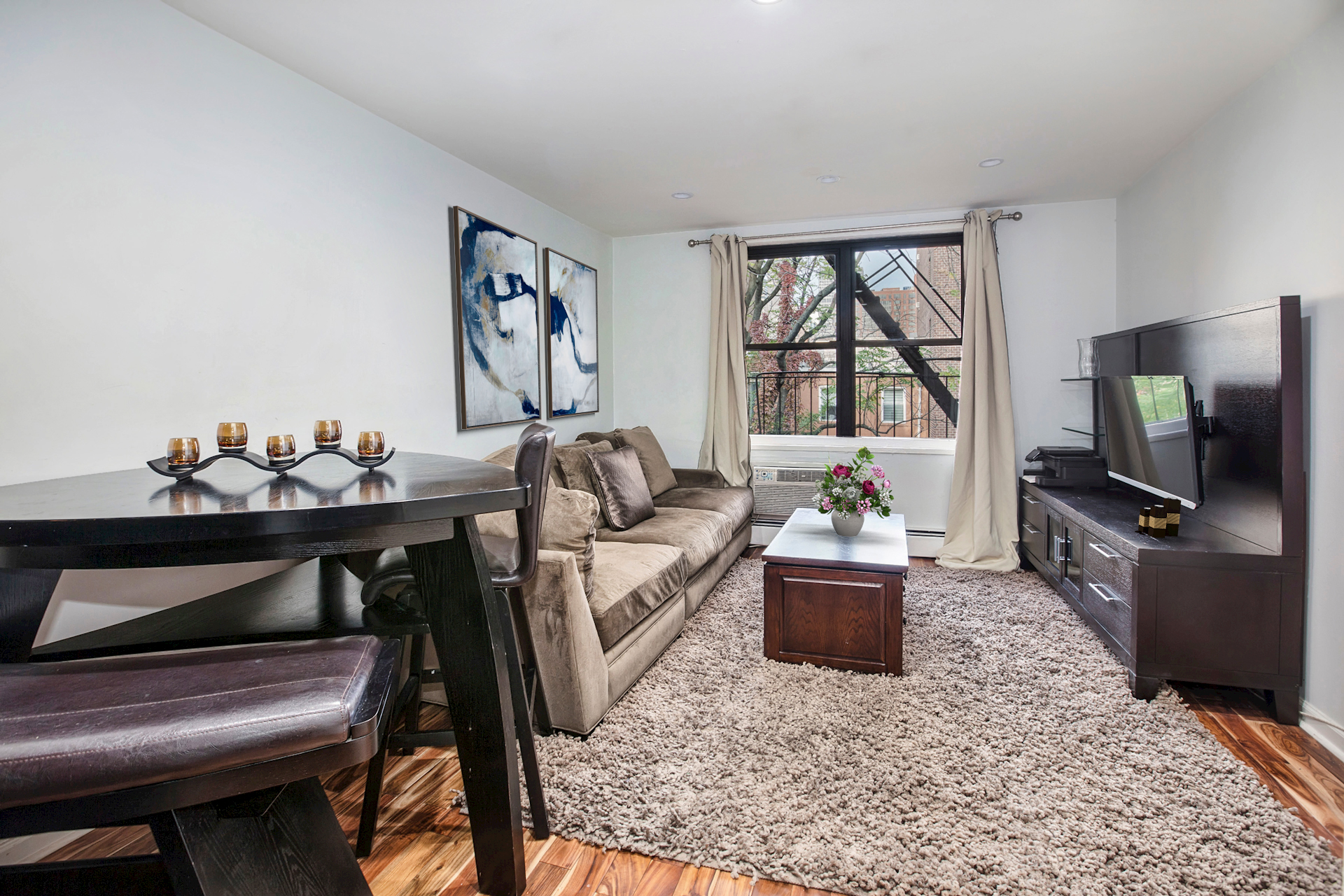
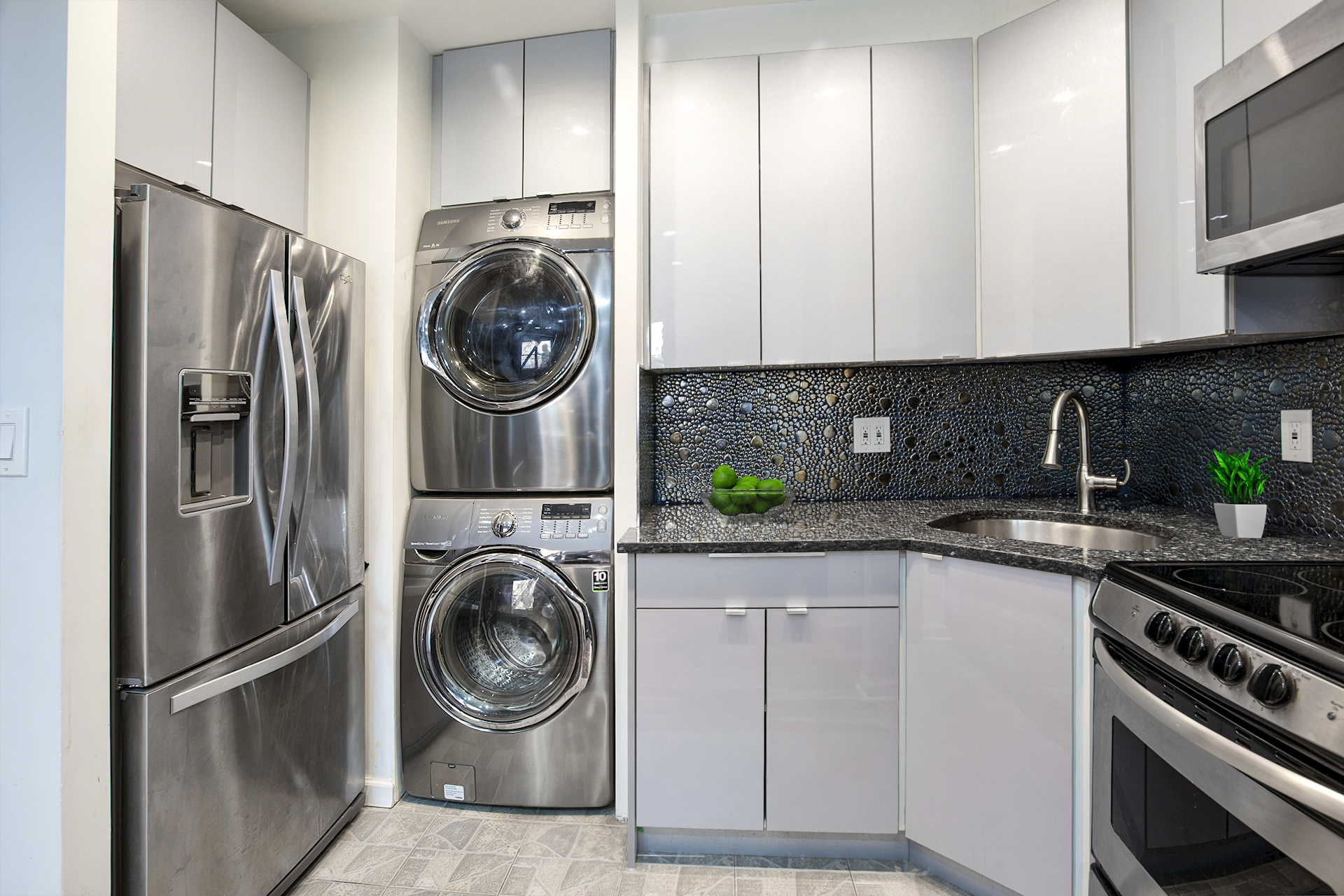
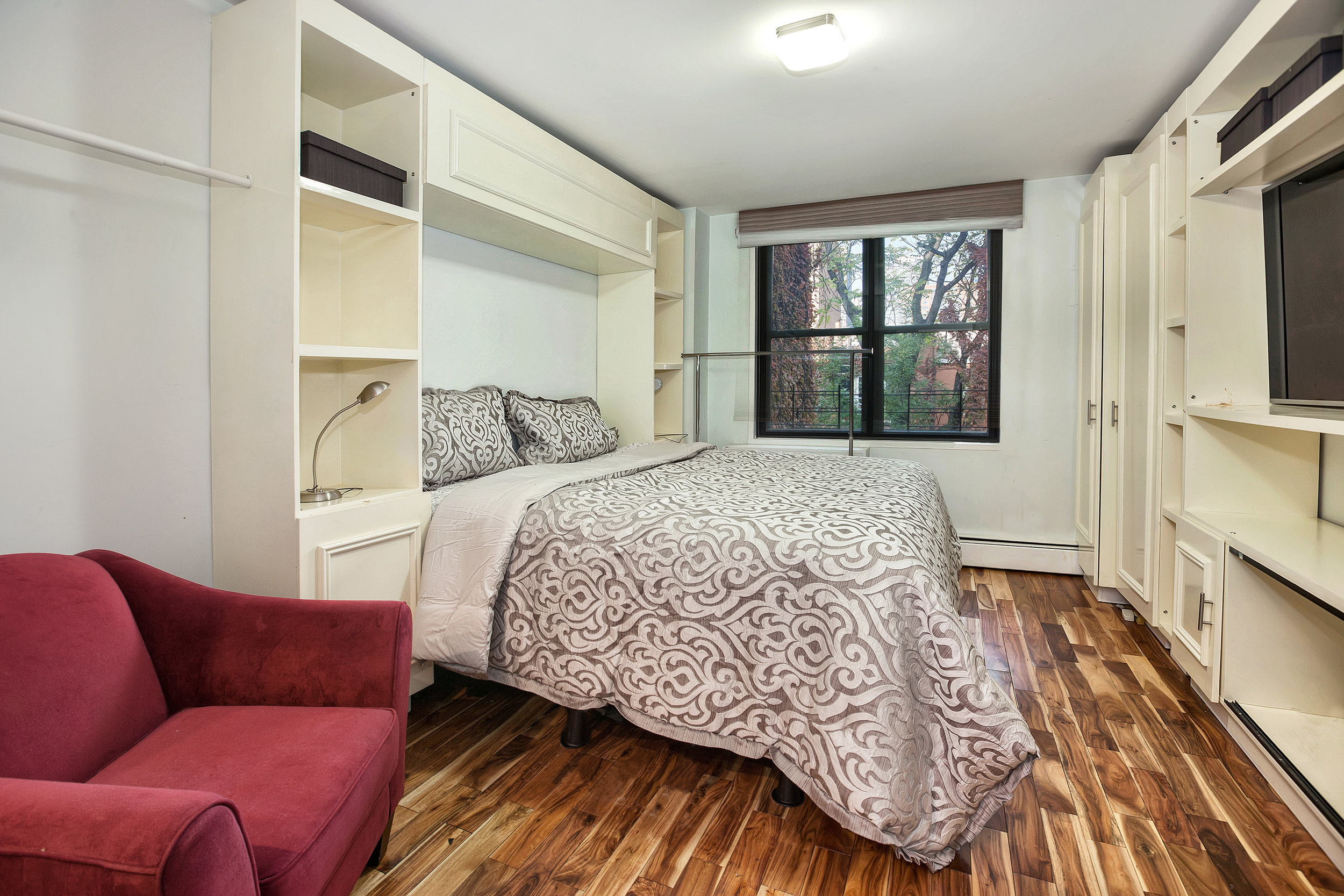
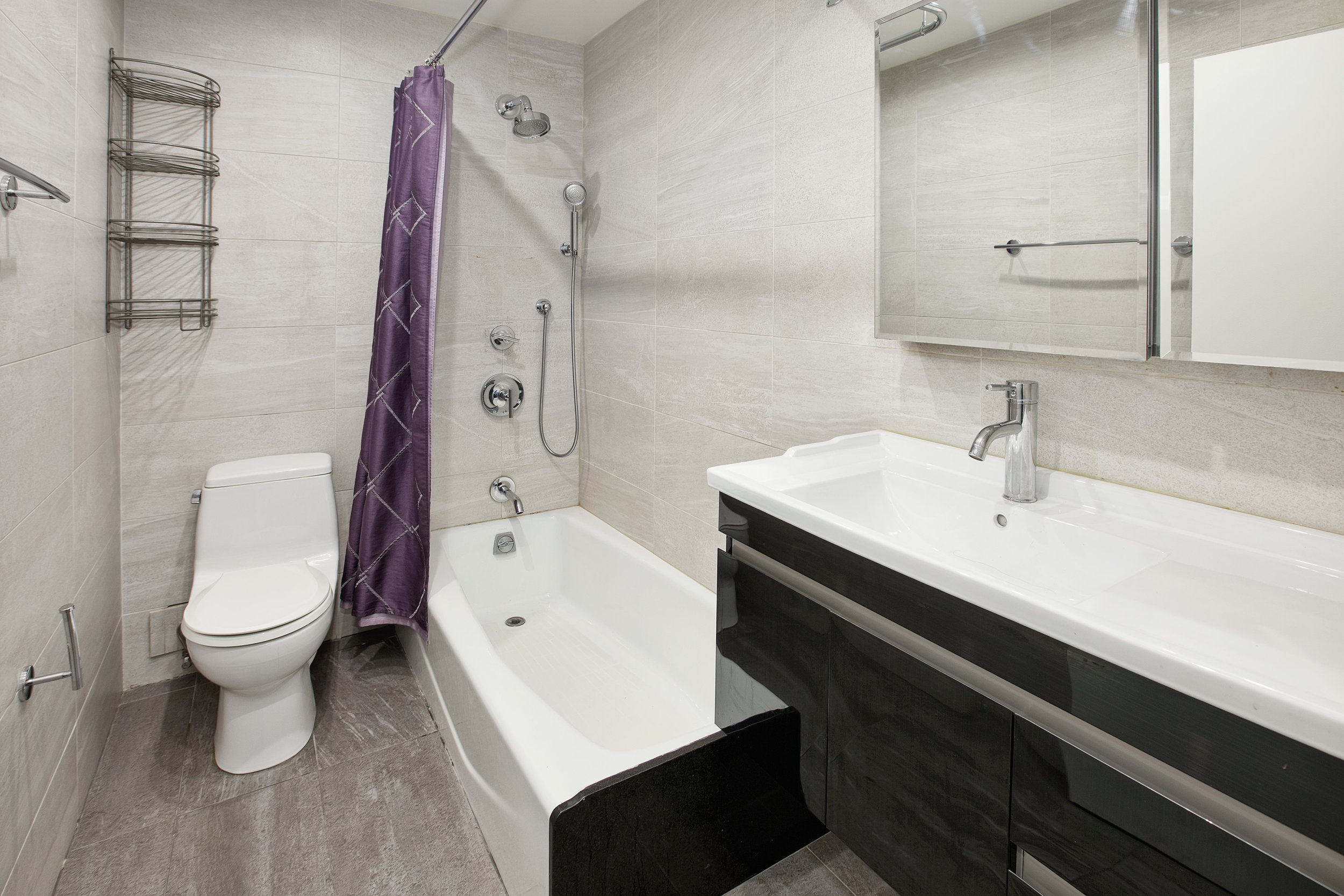
229 East 29th Street, Unit 4F
MURRAY HILL, MANHATTAN
1 Bed | 1.5 Bath
Offered At $750,000
MM: $1,209 / mo. | CondOp | Live-In Super
This perfect Kips Bay one-bedroom, one-and-a-half-bath home requires no board interview and allows immediate subletting, making it an ideal opportunity for investors and homebuyers alike.
Fine finishes and great details abound in this renovated co-op. New hardwood floors beckon you inside to take in oversized north-facing windows and a spacious living room. The truly stunning, modern kitchen is lined with sleek lacquer cabinets, granite counters and a striking backsplash surrounding chic stainless steel appliances, including a Samsung washer-dryer. In the master suite, convenient built-ins provide ample storage space in the king-sized bedroom, while ample use of stone and modern fixtures highlight the updated en suite full bathroom. A convenient powder room and hall closet complete this charming home's thoughtful layout.
229 East 29th Street is a pet-friendly, pre-war boutique co-op with a live-in superintendent. Co-purchasers, guarantors and pied-à-terres allowed. Set mid-block on a charming tree-lined street, this home benefits from the residential character of Kips Bay/Murray Hill with amazing proximity to great dining, nightlife, entertainment and shopping. Trader Joe's and Fairway Market attend to your every culinary desire, and the AMC Loews Kips Bay 15 provides easy access to the best new movies. Transportation options include the nearby 6 and N/R subway lines and the 34th Street Ferry Terminal providing service to Queens, Brooklyn and the Financial District.
The ABCs Of Financing A Condo Tower
Prior to the financial crisis of 2008, financing a condominium building was relatively simple. Since then, however, U.S. banks are less willing to lend the large sums required and, as such, the tiers of equity and debt needed to get the job done have become far more intricate. Developers who want to build a luxury condo tower need to pull together a complex array of equity partners and lenders.
The Real Deal put together a video that breaks down the process, looking at what strings are attached to the different types of capital and how they come together to form a functioning capital stack.
Watch the video above for a full rundown of how condo financing works in a world of wary banks and non-traditional lenders.
432 West 52nd Street, Unit 2F






432 West 52nd Street, Unit 2F
HELL'S KITCHEN, MANHATTAN
1 Bed | 1 Bath
Offered At $995,000
Taxes: $950 / mo. | CC:$847 / mo. | New Development | Doorman | Roof Deck & Gym
Stunning finishes line this brand-new home providing a rare opportunity to live in a spectacular new-construction building without paying the sponsor’s transfer taxes and closing cost fees!
The light-filled one-bedroom, one-bath home is topped by 9-foot ceilings while white oak hardwood floors run underfoot. The great room provides ample space for living and dining areas while the nearby open kitchen is a model of efficient, attractive design with integrated refrigerator, stainless steel appliances, lacquer cabinets and sleek Caesarstone countertops.
The large windowed bedroom is a serene space with a large closet, and two more large closets throughout the home ensure that storage is never an issue. The sleek bathroom features a custom vanity, frameless glass walk-in shower, gorgeous floor-to-ceiling tile and radiant heat flooring. Central climate control, energy-efficient windows and an in-unit washer-dryer provide the ultimate in comfort and convenience.
432 W 52 is a boutique condominium with extensive amenities including a 4,200-square-foot common landscaped roof deck, spacious residents' lounge, fully equipped fitness center and 24-hour doorman. Situated in Midtown within walking distance of Central Park, the Theater District, Columbus Circle and Times Square, the location is quite literally at the center of it all! Nearby access to the A/C/E, B/D, 1 and N/Q/R subway lines puts the rest of the city at your feet.
For Just $4m You Can Live In A Castle Just Outside The City
For $3.95 million, you can live in this perfectly adequate, (but nothing special) two-bedroom, two bathroom apartment on 53rd Street. Or! You can live in this castle in Yonkers that is the perfect mixture of French castle meets Eastern European discotheque. We know what we choose.
The castle at 170 Shonnard Terrace (known as Greystone Court) is currently owned by Kohle Yohannan, a writer and museum curator, who bought the home when it was a wreck in 2000 for $469,000 and proceeded to deck the bejeezus out of it. He imported actual historic rooms from Europe (from the 16th-18th centuries) and installed them in the castle, restoring it to its former glory. It has six bedrooms, seven bathrooms, eleven fireplaces, an octagonal ballroom with Hudson River views, a formal dining room with a six-foot chandelier, a conservatory, a morning room, a billiard room, an observatory and — because you should pray if you own this house — a private chapel. Phew.
The home was first listed in 2011 for $4.95 million, but has recently been re-listed for $3.95 million.

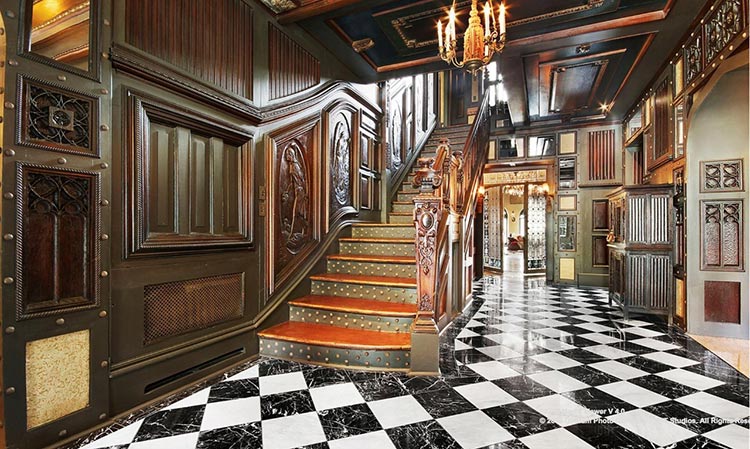

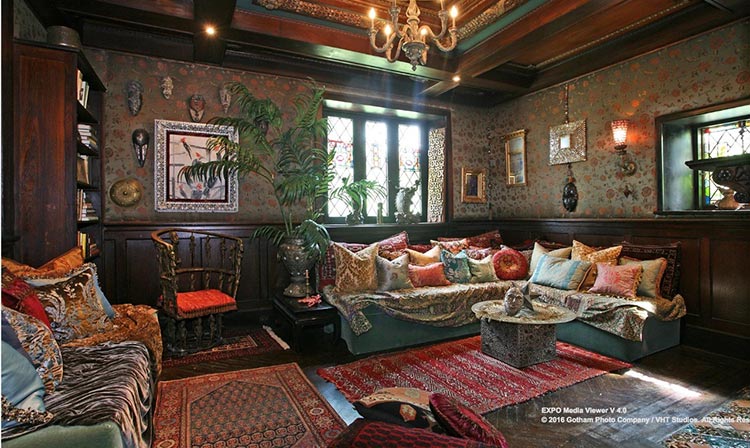

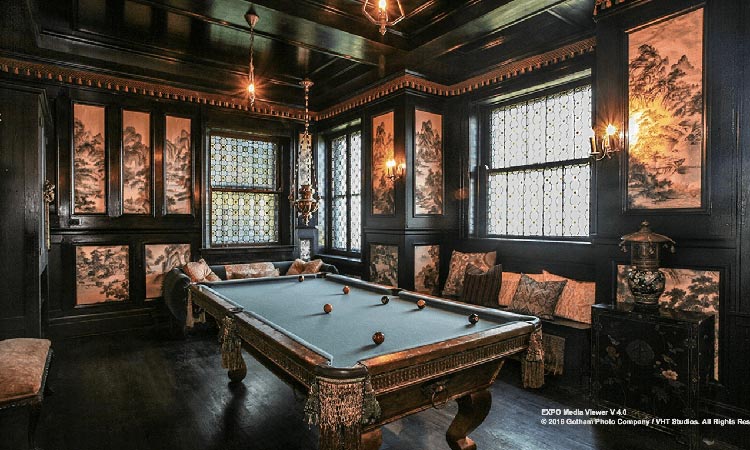

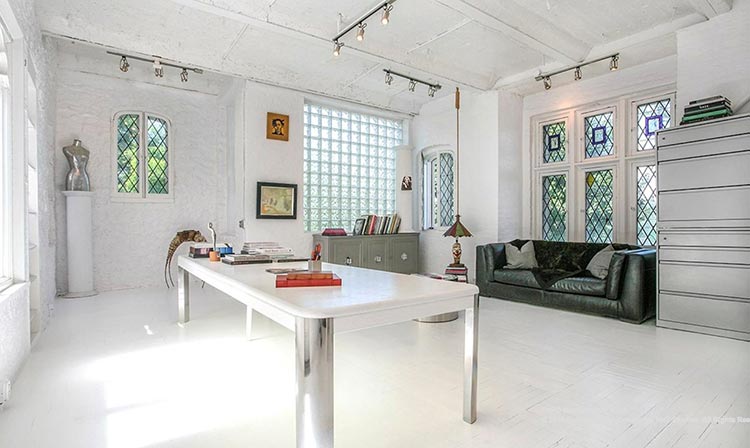

MTA Brings Select Bus Service 23rd Street
Going crosstown can be a nightmare, and often it’s faster to abandon public transportation altogether in favor of walking. But today, the DOT and Mayor Bill de Blasio launched Select Bus Service (SBS) along the notoriously slow 23rd Street corridor in Manhattan, with the goal of hopefully speeding up crosstown commutes.
The M23 serves as a key connector between multiple other subway and bus routes but has historically been bogged down by long wait times and large ridership—it currently serves 13,000 commuters daily. The newly added SBS route, which goes from Chelsea Piers to Turtle Bay with restricted turns, will, in theory, ease that congestion while improving traffic flow.
Like other SBS routes, the M23 SBS will have off-board fare collection and dedicated bus lanes. These features have been shown to reduce travel times by 10 to 30 percent, according to the MTA.
“Communities with limited subway options will now learn that SBS has a winning formula to transform bus commutes,” Mayor de Blasio said in a statement, adding that “SBS saves commuters precious time while also making streets—including the newly added 23rd Street route—much safer.”
This marks the 12th SBS corridor in the city, one step closer to de Blasio’s OneNYC goal of equitable and sustainable transit expansion.
This Week’s 5 Most Expensive Listings
In the past seven days, 10 new listings priced at $10 million and above hit the market, according to StreetEasy. From that list, these are the crème de la crème, otherwise known as the five most expensive residential listings.
1 Central Park South #1809
Address 1 Central Park South #1809
Price $58,900,000
Type/Size Condo: four bedrooms and four-and-a-half bathrooms
The most expensive listing this week comes courtesy of Tommy Hilfiger. The designer has just relisted his duplex at the Plaza for $58.9 million — more than a 25% price cut from the $80 million he was asking for when it first hit the market in 2013.
293 Lafayette Street #PHIV
Address 293 Lafayette Street #PHIV
Price $35,000,000
Type/Size Condo: four bedrooms and five-and-a-half bathrooms
This sprawling penthouse at the Puck Building entered contract back in 2013 for $27.5 million. StreetEasy sheds no light on whether the sale was ever completed, but here it is again, with a $35 million asking price. Just like Penthouse I, which LLNYC toured earlier this year, this pad comes with barrel-vaulted ceilings, floor-to-ceiling windows, and a private terrace.
240 Centre Street #Ph
Address 240 Centre Street #Ph
Price $35,000,000
Type/Size Co-op: four bedrooms and four-and-a-half bathrooms
A few weeks ago we featured the Police Building penthouse at the top of our Most Expensive list; today little has changed — it’s still not new to the market, it still doesn’t have a new price-tag, but, once again, it does have a new broker. The spread comes with a bucket-load of character, a spiral staircase, an elevator and a circular living room, all of which we got to witness for ourselves when we toured the pad back in March.
53 Leonard Street #Ph
Address 53 Leonard Street #Ph
Price $18,000,000
Type/Size Condo: three bedrooms and three-and-a-half bathrooms
Down in Tribeca you’ll find this sizable spread. It’s been on and off the market a few times since it was first listed earlier this year, but the $18 million price tag remains. It comes with multiple terraces, a wood-burning fireplace, a skylight and some very shiny floors.
325 West Broadway Penthouse-West
Address 325 West Broadway Penthouse-West
Price $17,500,000
Type/Size Condo: four bedrooms and four-and-a-half bathrooms
In Soho, and on the site of a former chocolate factory, is Xoco 325. The building is a individual looking one, and this penthouse comes with direct elevator access, a private terrace, walk-in closets, and city views.
5 Myths About Daylight Saving Time
By Rachel Feltman Reporter March 6, 2015
Daylight saving time strikes again Sunday at 2 a.m., at least for every state outside Hawaii and Arizona. Though DST has been part of life in the United States since World War I, its origin and effects remain misunderstood, even by some of the lawmakers responsible for it. Here are some common myths.
1. Daylight saving time was meant to help farmers.
Many of us heard, at some point in elementary school, that DST was developed because of farming. The idea that more daylight means more time in the field for farmers continues to get airtime on the occasional local news report and in state legislatures — “Farmers wanted it because it extends hours of working in the field,” Texas state Rep. Dan Flynn offered after filing a bill that would abolish DST. Even Michael Downing, who wrote a book about DST, has said that before researching the subject, “I always thought we did it for the farmers.”
In fact, the inverse is true. “The farmers were the reason we never had a peacetime daylight saving time until 1966,” Downing told National Geographic. “They had a powerful lobby and were against it vociferously.” The lost hour of morning light meant they had to rush to get their crops to market. Dairy farmers were particularly flummoxed: Cows adjust to schedule shifts rather poorly, apparently.
Daylight saving time, in this or any other country, was never adopted to benefit farmers; it was first proposed by William Willett to the British Parliament in 1907 as a way to take full advantage of the day’s light. Germany was the first country to implement it, and the United States took up the practice upon entering World War I, hypothetically to save energy. How did farmers end up being the mythical source of DST? Downing suggests that because they were such vocal opponents, “they became associated into the popular image of daylight-saving and it got inverted on them. It was just bad luck.”
2. The extra daylight makes us healthier and happier.
That additional vitamin D is good for us, right? Sen. Ed Markey (D-Mass.) thinks so. “In addition to the benefits of energy savings, fewer traffic fatalities, more recreation time and increased economic activity, Daylight Saving Time helps clear away the winter blues a little earlier,” he said in a statement last year. “Government analysis has proven that extra sunshine provides more than just smiles. . . . We all just feel sunnier after we set the clocks ahead.” Gwyneth Paltrow agrees, opining to British Cosmopolitan in 2013: “We’re human beings and the sun is the sun — how can it be bad for you? I think we should all get sun and fresh air.”
A little more vitamin D might be healthy, but the way DST provides it is not so beneficial to our well-being. Experts have warned about spikes in workplace accidents, suicide and headaches — just to name a few health risks — when DST starts and ends. One 2009 study of mine workers found a 5.7 percent increase in injuries in the week after the start of DST, which researchers thought was most likely due to disruption in the workers’ sleep cycles. An examination of Australian data found a slight uptick in male suicides in the weeks following time shifts, to the effect of half an excess death per day, which the researchers blamed on the destabilizing effect of sleep disruption on people with mental health problems. And some physicians warn that changes in circadian rhythm can trigger cluster headaches, leading to days or weeks of discomfort.
The literature on these health effects is far from conclusive, but spring sunshine does not outweigh the downsides of sleep disruption across the board.
3. It helps us conserve energy.
Congress passed the Energy Policy Act — which extended DST by a month — in 2005, ostensibly to save four more weeks’ worth of energy. “An annual rite of spring, daylight saving time is also a matter of energy conservation. By having a little more natural daylight at our disposal, we can help keep daily energy costs down for families and businesses,” Rep. Fred Upton (R-Mich.), who co-sponsored the legislation along with then-Rep. Markey, said in a 2013 statement.
But in a follow-up study on the effects of the extension, the California Energy Commission found the energy savings to be a paltry 0.18 percent at best. Other studies have indicated that people may use less of some kinds of energy, such as electric lights, but more of others. More productive daylight hours might be meant to get you off the couch and recreating outside, but they’re just as likely to lead to increased air-conditioner use if you stay home and gas guzzling if you don’t.
A study in Indiana actually found a slight increase in energy use after the entire state adopted DST (for years, only some counties followed it), costing the state’s residents about $9 million; the researchers believed that more air conditioning in the evening was largely to blame. That’s a far cry from the $7 million that Indiana state representatives had hoped residents would save in electricity costs.
4. DST benefits businesses.
We know that businesses think daylight saving time is good for the economy — just look at who lobbied for increased DST in 2005: chambers of commerce. The grill and charcoal industries, which successfully campaigned to extend DST from six to seven months in 1986, say they gain $200 million in sales with an extra month of daylight saving. When the increase to eight months came up for a vote in 2005, it was the National Association of Convenience Stores that lobbied hardest — more time for kids to be out trick-or-treating meant more candy sales.
But not all industries love daylight saving time. Television ratings tend to suffer during DST, and networks hate it. “Come March, when daylight savings time and the HUT [households using television] level goes down in the early evening, it really takes its toll on the 8 o’clock hour, particularly for comedies,” Kevin Reilly, then chairman of Fox Entertainment, said in 2014, explaining his decision to cut the network’s 8 p.m. comedy hour.
Airlines have also complained loudly about increased DST. When DST was lengthened, the Air Transport Association estimated that the schedule-juggling necessary to keep U.S. flights lined up with international travel would cost the industry $147 million. DST hurts other transportation interests, too: Amtrak is known to halt its overnight trains for an hour when clocks change in November so they don’t show up and leave from their 3 a.m. destinations early. In the spring, trains have to try to make up lost time so they can stick to the schedule.
DST might also cost employers in the form of lost productivity. A 2012 study found that workers were more likely to cyberloaf — doing non-work-related things on their computers during the day — on the Monday after a DST switch. Study participants who lost an hour of sleep ended up wasting 20 percent of their time.
5. Standard time is standard.
Guess what time we’re on for eight months of the year? Daylight saving time. In what universe is something that happens for only one-third of the time the “standard”? Even before the 2007 change, DST ran for seven months out of 12.
In fact, some opponents of DST aren’t against daylight saving time per se: They think it should be adopted as the year-round standard time. Because it basically already is.















































